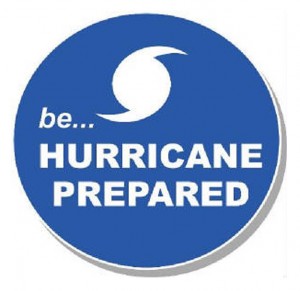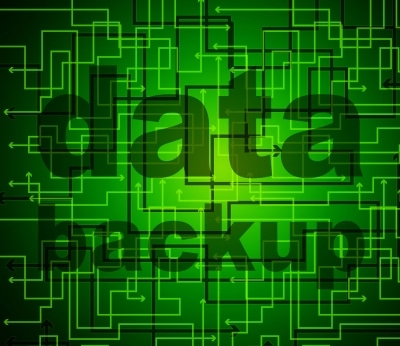Posted by Eric O. Schueler, Senior V.P. of Information Technology
Protect your business with data backup and data recovery.
Be proactive and make sure your business data is secure and professionally backed up offsite to protect your company from disasters such as: hurricanes, floods, fire, viruses, ransomware, etc.
Last year’s hurricane season brought Hampton Roads an estimated 500 million dollars in damage. According to FEMA, almost 40 percent of small businesses do not reopen following a disaster. A few inches of water can cost tens of thousands of dollars and you can lose important business information. There are also other manmade disasters that can affect your business’s data such as viruses and ransomware. You need your business’s data backed-up offsite to ensure its safety.
Hurricane season is June 1 – November 30. Is your business prepared?
Your business should be preparing for hurricane season by:
- Physically protecting your property – A few ways to protect your property can include: anchor bookshelves, relocate valuables, evaluate your roof, sandbag any areas prone to flooding, install shutters to protect windows.
- Protecting important information and documents – Develop an IT disaster recovery plan so your business can recover important files, programs and documents that are essential to your business. Back up your computer files, programs and documents to a safe, offsite location.
- Having Safety Equipment – Make sure you have safety equipment such as first aid kits and flashlights, review evacuation plans, crisis communication plans and more. Click here for more information on writing and managing plans and training employees for crisis situations.
- Creating an Evacuation Plan – Develop a list of things that need to be done in your business to prevent damage, like using sandbags and whether you should turn off power. Know how you will pack materials and equipment. Create a plan for employees to keep in touch when they evacuate.
Click here for the Business Protection Toolkit from FEMA.
Important Business Information and Documents
We’re going to focus on protecting important business information and documents. That’s our area of expertise, and let’s face it, without your important business data it would be extremely difficult for your business to carry on, even after your building is repaired. Nowadays, even all your business contacts are saved on your computer; the days of Rolodexes are gone. What about your software? Databases? Financial documents? You get the picture. Without all of this information, how would your business survive? The answer is, it probably wouldn’t and that’s why preparedness is so important.
Data Backup
Your business should be regularly backing up your important business files to an offsite location, to protect your documents from disasters such as malware, natural disasters or computer malfunctions/crashes. You need to be backing up files often enough, that should your files be lost, your business can keep functioning.
Some ways to back up your data include:

File and Folder Cloud Sync
This method is not even classified as a backup type product but because of it’s nature of keeping your files synchronized in the cloud for retrieval from anywhere or any device it serves a secondary purpose – a way of backing up. You just need to be aware that anything you aren’t keeping in a synchronized folder is not getting backed up.
File and Folder Cloud Backup
Much like the option above, there are lots of companies offering a cloud backup solution that you install on your computer and select files and folders to backup to their data center. The downside is that if you lose your computer or server entirely you must reinstall your operating system, all the applications, and reconfigure everything manually before you restore your files. Also, depending on how much data you were backing up, it could take days to download it all for a complete recovery.
Imaged Based Backup
The best option for your servers will always be a solution that takes a full image backup of the entire disk drive and then it snapshots the changes made every hour. This way you will not have to reinstall or reconfigure anything to get back up and running. With a server it may have taken days to get it set up and configured properly and the time and money invested in getting it running the first time is not something most businesses are willing to wait for after disaster happens. With this option, there are a few other features and benefits to consider:
Destination – The other backup options sync your files directly from your computer or server and send them to the cloud. With this option, you need a local destination to keep your images. This can be a simple USB drive or it can a server designed just for backup and recovery.
Replication – A good imaged based backup is a good start but it doesn’t necessarily include a method for getting it offsite. Make sure you pair your onsite backup with replication to the cloud or to a secondary location if your business has more than one office
Recovery Options – With a full image backup, you often have many choices for recovery or temporary solutions. It’s important to write your plan around how you plan to recover from a disaster scenario. Options typically include:
- Mount your disk image to extract files and folders if you need something right away.
- Boot up your image as a virtual machine from temporary hardware onsite or in the cloud.
- Restore back to the same hardware, different hardware, or as a virtual machine.
Develop an IT Disaster Recovery Plan
Your business should develop recovery strategies to anticipate the loss of any of the following system components: hardware (computers, servers, networks, wireless devices, etc.), software applications, connectivity to providers (fiber optics, cable, wireless), and data. In your IT disaster recovery plan, you will need to:
- Compile an inventory of hardware (servers, desktops, laptops, wireless devices, and more) and software programs and data.
- Back up all critical business information.
- Identify essential hardware and software and ensure that you have copies of software to install on replacement equipment.
- Prioritize hardware and software restoration.
- Identify if your business will do internal data recovery in the case of a disaster or if you will outsource to a vendor.
Backing up your business’s data offsite frequently will help your business to continue, should disaster strike. To find out more about data backup and data recovery solutions call HRCT at 757-399-3350 or toll-free at 800-319-1878, or click here to request more information online.
Posted by Eric O. Schueler, A+, MCP, MCSE, MCTS, CSSA, ACSP – Senior V.P. of Information Technology at HRCT. Eric has been in the business of providing IT and consulting for small and medium business for more than 15 years.
Hampton Roads Communication Technologies (HRCT) provides quality business telecommunications solutions, like Office 365, computer and IT support and managed service agreements to companies and organizations throughout the United States, Mid-Atlantic and the Hampton Roads Virginia cities of Virginia Beach, Chesapeake, Norfolk, Portsmouth, Suffolk, Newport News and Hampton, north into Williamsburg and south into the Outer Banks of North Carolina. HRCT keeps your company connected with 24/7 emergency service.
Call today. (757) 399-3350
Sources: FEMA, PCWorld
Images from FreeDigitalPhotos.net by Stuart Miles

